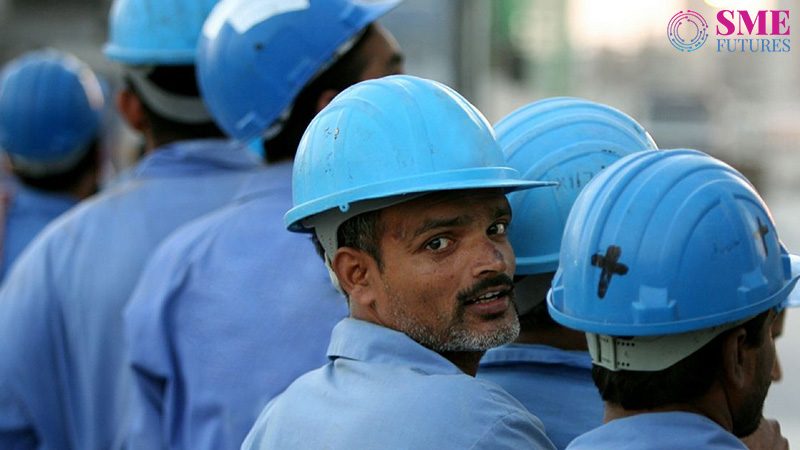2020 has been a year of disruption as it changed our lives and work extensively. As work from home became the new normal for the white-collar workers, blue collar workers saw the worst hit. These individuals lost jobs and fear of virus forced them out of metropolitan cities. The visuals of mass migration of blue collar workers with their families left the deep scar on the perception of a secure life.
Centre for Monitoring Indian Economy (CMIE) states that a high unemployment rate of 11.63 per cent was recorded on June 14th. Job opportunities drastically went down during this period of two months. A total of more than 10 lakh blue-collar workers lost their jobs during the COVID-19 lockdown. The total income loss is estimated to be Rs 2467 crores, stated a report by Betterplace.
But, now there is a visible improvement in the scenario. The latest CMIE data suggests that there is a gradual decrease in unemployment rate with the opening of various sectors and the approaching festive season. The unemployment rate registered on 18th October was 6.11 per cent. A Job Report 2020 by Betterplace analyses the current scenario of blue-collar jobs and provides insights based on the reality of first nine months of 2020.
The significant shift that is poised to sweep across the blue-collar ecosystem comprises of new expectations of job seekers and their impact on employers. The migrant workforce is now returning to work due to the requirement of a sustainable livelihood and now expects a healthy, safe, and stable work environment. Assurance of a guaranteed income and healthcare insurance cover is prominent in minds of the migrant workforce.
Pravin Agarwala, Co-founder and CEO at Betterplace, a blue collar employee management company claims, “The COVID outbreak in India has impacted the blue-collar sector like never before. Lakhs of migrants walking back to their villages which led to their absence in industry demonstrated how urban India is dependent on this workforce. With the onset of the festive season across the country, it is heartening to see governments and private sector employers rising to the challenge of rehabilitation of this workforce.”
Job demand of blue-collar workers in 2020
This report reinforces the fact that pipeline of jobs on the ground is robust. With the returning of migrant workers, sectors are already witnessing appearance of green shoots in demand generation of jobs in cities like Bangalore, Hyderabad, Mumbai, and Delhi.
The report based on data, analytics, and AI recommendations indicate a gradually recovering economy. It also indicates that the overall demand for jobs in 2020 would be 14 lakhs. Sectors like delivery and healthcare will surpass pre-COVID levels in job generation. While job opportunities will see massive growth in tier 2 and 3 cities, Bangalore and four metros will generate 70 per cent of demand as compared to pre-COVID levels.
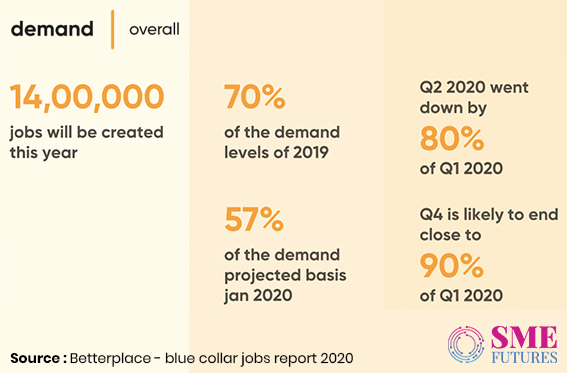
As workplaces now are regulated by the new norms, the new trend of gig economy is rapidly emerging. Considering the hiring patterns and employers projections, the report suggests that gig economy will prevail for long. It will lead 80 per cent of overall job demand and recovery will be faster in sectors where gig economy is dominant.

Job segment such as drivers, facility men, security etc were worst hit during the lockdown period of two-months. According to the statistics collected, the driver segment took the worst hit witnessing a 97.5 per cent drop in overall demand during the Q2 2020. The delivery segment jobs saw a nearly 40 per cent drop during the Q2 period but now it is expected that there is a rise in demand for delivery personnel it will surpass the numbers of January 2020.
The demand of jobs from states like Uttar Pradesh and Delhi decreased by 90 per cent during Q2 2020. But the rate of recovery suggests that nearly one-third of the demand for jobs will come from three southern states i.e. Karnataka, Tamil Nadu and Telangana. The city wise maximum job creation is expected to happen in Bangalore with 58,000 jobs, followed by Hyderabad, Delhi, and Mumbai.
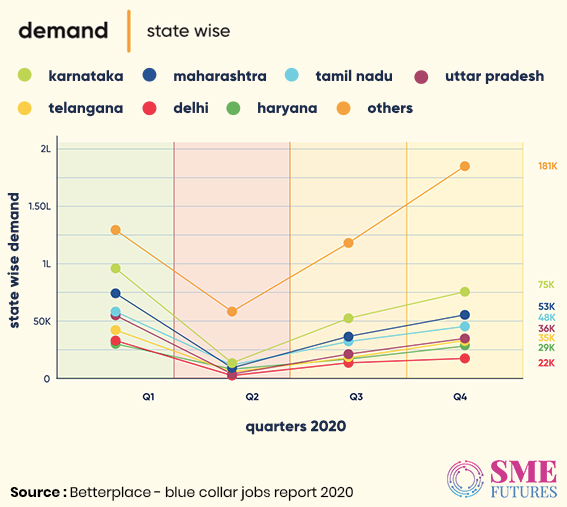
Job loss, migration, and other predicaments
As per the estimate, nearly 44 per cent of job losses were from gig economy. The segment of drivers witnessed 60 per cent job drop in Q2. 31 per cent jobs are lost in traditional space with facilities losing 42 per cent and security 37 per cent respectively. On the other hand, 30 per cent of job losses are from Bengaluru, Hyderabad, Mumbai, and New Delhi alone.

The outbreak of the pandemic resulted in massive job loss people which further led to mass reverse migration. Trails of people migrating to their hometowns helplessly became a prominent visual across highways. They returned to their native lands in search of sustainable jobs and due to fear of the contagion.
It is estimated that 73 per cent of the blue-collar employees migrated to a different state for finding work. Bengaluru and Hyderabad became the top destination for migrant workforce. A list of preferred destination cities by migrating workforce is provided below.
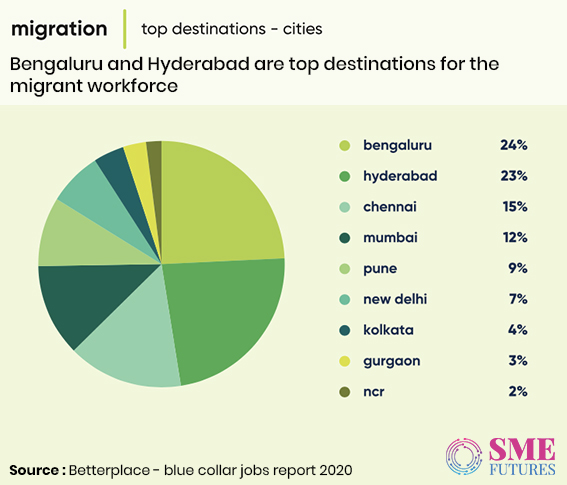
Bengaluru and Hyderabad saw huge influx from Odisha, Assam, and Uttar Pradesh. In addition to this, majority of people from Bihar migrated to Delhi and Gurgaon. Likewise, Mumbai is home to the migrant workforce that comes from Madhya Pradesh.
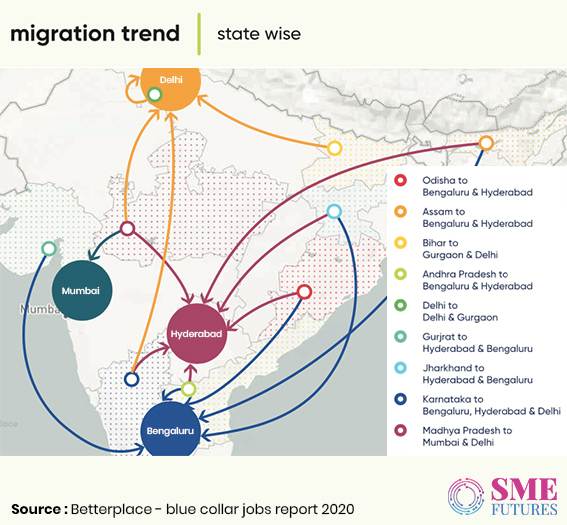
Along with that, the top five cities from where the workforce reverse migrated were Mumbai, Bangalore, Delhi NCR, Hyderabad and Chennai. Adding to that, top six destination states where migrant workforce returned were UP, Bihar, Rajasthan, MP, Jharkhand and Odisha.
Paving a concrete path towards recovery
The migrant workforce is expected to return in search of jobs as the fear of pandemic subsides. Moreover, the need for earnings will drive them back. Saurabh Tandon, Co-founder and COO at Betterplace opines that demand generation will be faster in tier 1, tier 2, and tier 3 cities like Hyderabad, Pune, Noida, and Gurgaon.
As per the Job report 2020, reasons for recovery will be driven by factors like the critical need to rebuild support systems for essential goods, continuity of businesses, better understanding of hygiene measures, and a strong infrastructure to fight the pandemic.
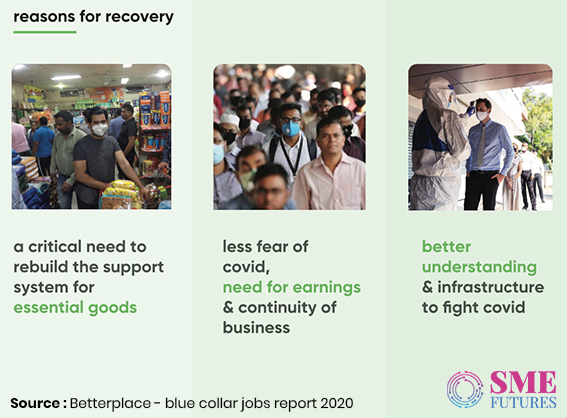
As per the report, sectors such as mobility and hospitality are still under the stress. Data suggests that recovery is expected till end of the year. The recovery is expected to be at 60 per cent of the pre-COVID levels. With opening of businesses, jobs from sectors such as facilities, security, ITeS, and retail are out of stress.
This segment is hence expected to close the year at 90 per cent of Jan 2020 demand levels with close to 60,000 openings. On the other hand, jobs in the delivery, healthcare and manufacturing have recovered rapidly and are growing further. According to the report, the delivery and healthcare segment is expected to grow beyond pre-COVID levels and surpass the figures of Jan 2020.
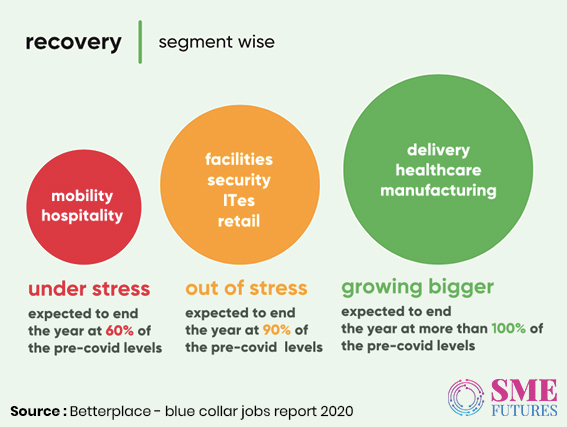
What lies ahead for blue-collared workers?
Undoubtedly, blue collar workers constitute the worst affected section due to the onslaught of pandemic. But, now they are gradually coming back to work. On their path towards recovery and with the changing work environment and new norms, expectations of employees have also changed. The top-demand of workers now are healthy work and living conditions.
“As the report indicates that safety and health are now of paramount concerns on both sides of the aisle, the blue-collar segment will embrace digital transformation at every level. This will include digital on-boarding, managing payroll and attendance, and working in flexible hours. Large employers have already taken a lead in this direction. The mid-size companies in security and facility are also embrace digitalisation gradually,” Saurabh adds further.
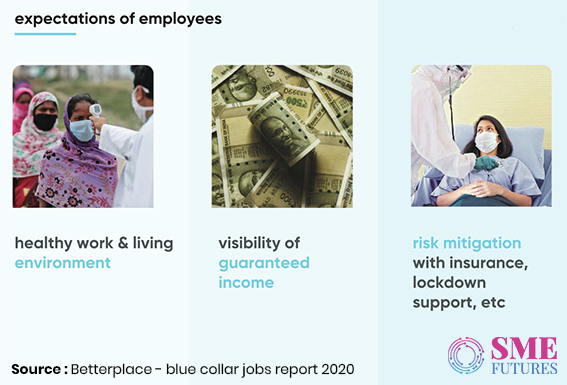
On the other hand, employers are seeking or outsourcing services for non-core functions through a shared services model. This has led to growth of gig-economy model. The businesses are also adopting technology solutions with highly efficient and distributed workforce management systems. Besides that, employers now-a-days are also operating through flexible workforce to manage the fluctuating demands. Overall, the employers who would provide their workforce with a stable, safe and healthy work environment would attract a majority of the returning crowd.

